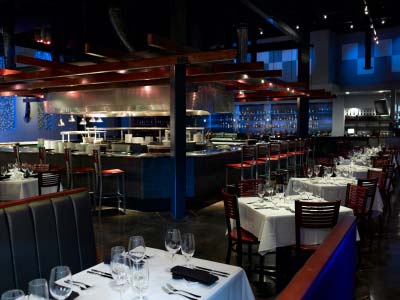Restaurant owners can be assured of increasing their gross profits margins when they become licensed to sell liquor. Nightclub and Bar Magazine conducted a survey in Chicago, and the researchers learned that alcoholic drinks amounted to 14.4 percent of bar and restaurant sales. If you do not have a Texas beer license or other state required liquor licenses, you may want to start the process of obtaining them through a Texas license services company to increase the profitability of your establishment.
The Gross Profits Margin
You can discover how much money you are earning from liquor sales by determining the product’s gross profits margin. The gross margin is a highly useful figure for business owners because it tells them how much profit they are earning from each particular product.
Cost of Goods and Net Sales
Learning the gross margin for liquor sales is simple. You will need to know how much it will cost to obtain the beverages you plan to sell. This figure is called the “cost of goods.” You also need to calculate “net sales.” You arrive at this figure by tallying how much your patrons spend on their beverages. If you offer any discounts, subtract this amount from prices paid, and you will have the net sales amount.
Calculating the Gross Margin
After you have the numbers described above, you can determine the gross margin. Take net sales and subtract the cost of goods. Then, you can convert the whole number into a percentage by dividing it by net sales.
An Example
With the purchase of one keg of beer for about $100, you have enough beer to offer patrons 165 12-ounce servings or 124 16-ounce servings. At $4 a glass, the amount paid for beverages will be between $490 and $660. After using the formulas described above, you will find that the profit margin is equal to 500 percent.
Increased Competition
Although liquor sales have offered bar and restaurant owners large profits in the past, industry experts are expecting these profits to slow down in the next couple of years. More people are expected to purchase their alcoholic beverages from bars and restaurants, but researchers from IBISWorld believe that this increased competition is going to decrease each individual establishment’s profit margin.
Increasing Your Gross Profits Margin
You can increase your ability to realize a higher gross profits margin for liquor sales by investing in mobile point-of-sale (POS) systems. POS systems serve two purposes. They make it easier for your servers to sell the product, and they store data you need to calculate your gross profits margin.
Servers Remain at the Table
People often want to know how POS systems allow servers to increase liquor sales. Because servers can remain at the tables at the same time that they place an order, servers can continue to engage with the customers and sell more of the product.
Detailed Information Is Collected
A POS system tells you very detailed information that can help you stage your restaurant or bar more effectively. For example, with a POS system, you will be able to determine when people purchase more wine, beer or spirits throughout the day and plan accordingly.
You Know When Inventory Is Low
With a POS system, you will know in real time when your inventory is low. Then, you can re-order the product you need directly from the system. It can even figure waste loss percentages and waste loss variance so that you can manage loss.
Texas License Services
In order to obtain a Texas liquor license, you will need to meet the states qualifications. After being approved, you will be required to follow the state’s rules and regulations, and you will have to renew the license in the future. This does not have to be difficult because Texas license services can handle the entire process so you can focus on running your business.

